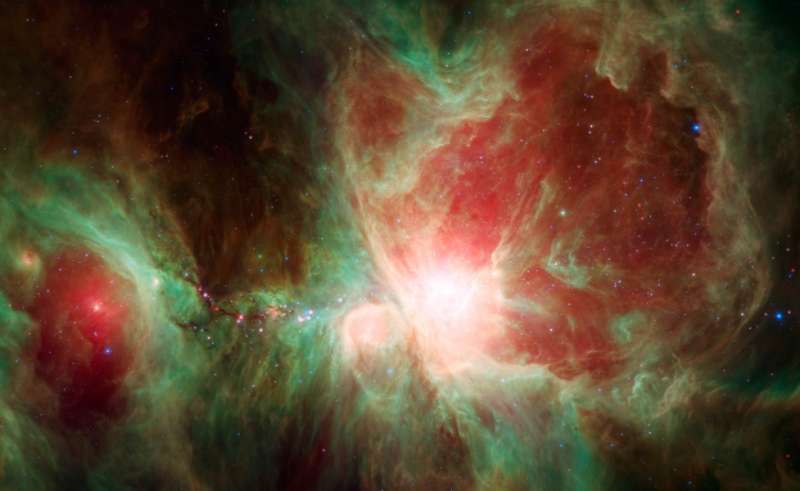 |
Астронет: Астрономическая картинка дня Орион со Спитцера http://variable-stars.ru/db/msg/1298704/eng |
Credit & Copyright: NASA,
JPL-Caltech,
T. Megeath (Univ. Toledo, Ohio)
Explanation:
Few cosmic vistas excite the imagination like
the Orion Nebula,
an immense stellar nursery some 1,500 light-years away.
This stunning false-color
view spans about 40 light-years across the region,
constructed using
infrared data
from the Spitzer Space Telescope.
Compared to its
visual wavelength appearance,
the brightest portion of
the nebula is likewise centered on Orion's young, massive, hot stars,
known as the Trapezium Cluster.
But the infrared image also detects the nebula's many protostars, still
in the process of formation, seen here in red hues.
In fact, red spots along the dark dusty filament to the left
of the bright cluster include the protostar cataloged as HOPS 68,
recently
found to have
crystals of the silicate mineral olivine within its
protostellar envelope.
Authors & editors:
Robert Nemiroff
(MTU) &
Jerry Bonnell
(USRA)
NASA Web Site Statements, Warnings,
and Disclaimers
NASA Official: Jay Norris.
Specific
rights apply.
A service of:
LHEA at
NASA /
GSFC
& Michigan Tech. U.
